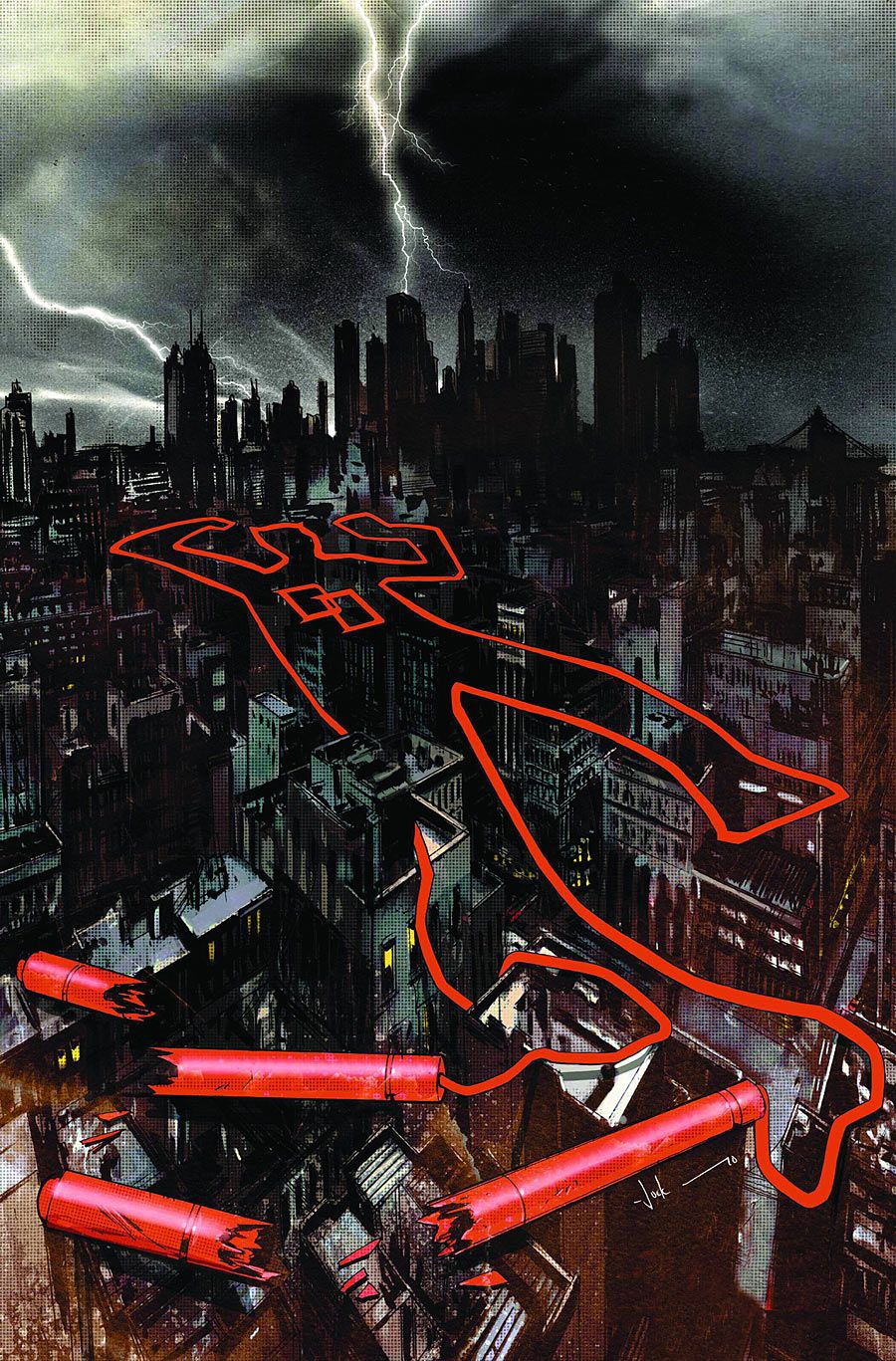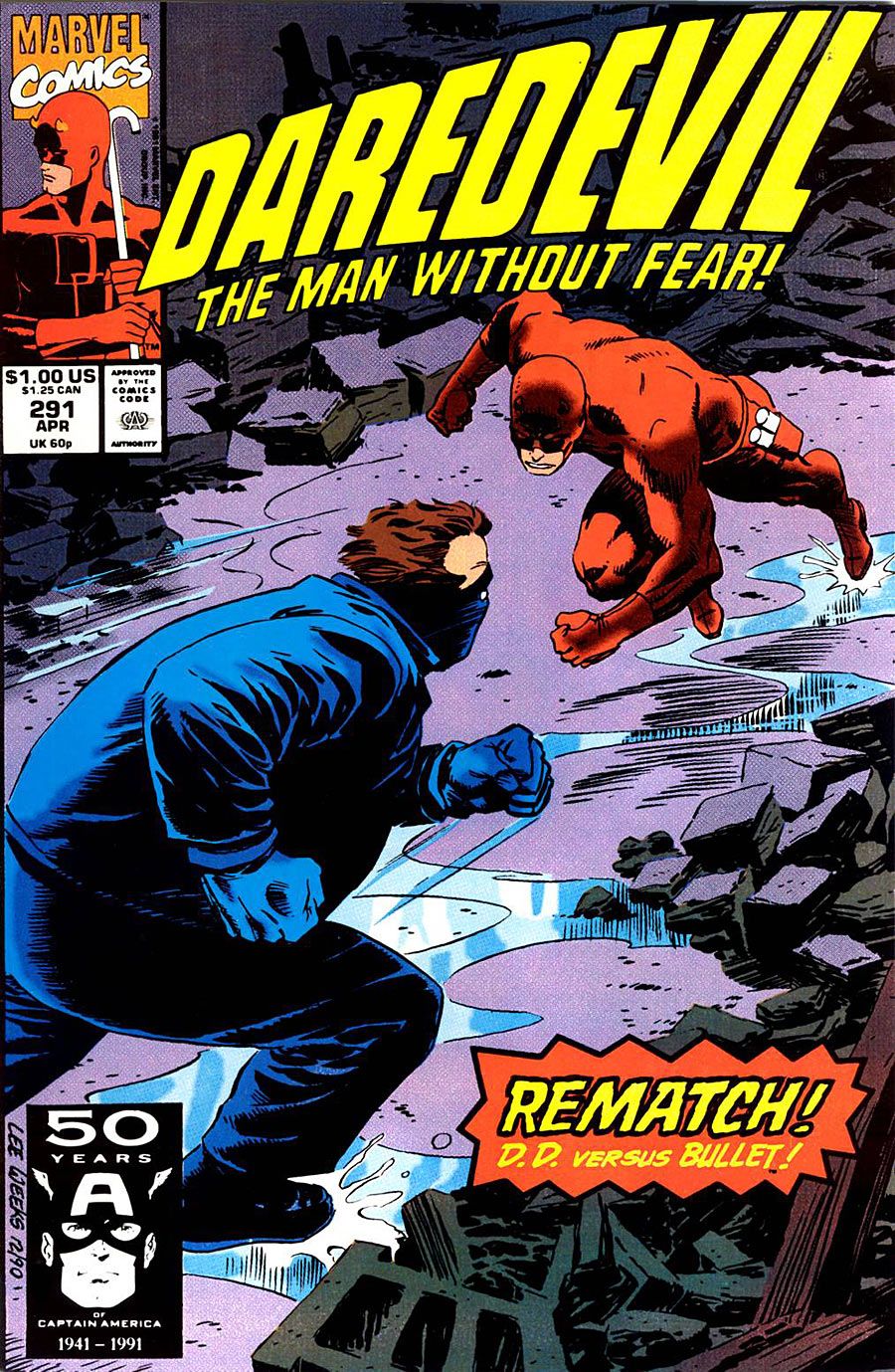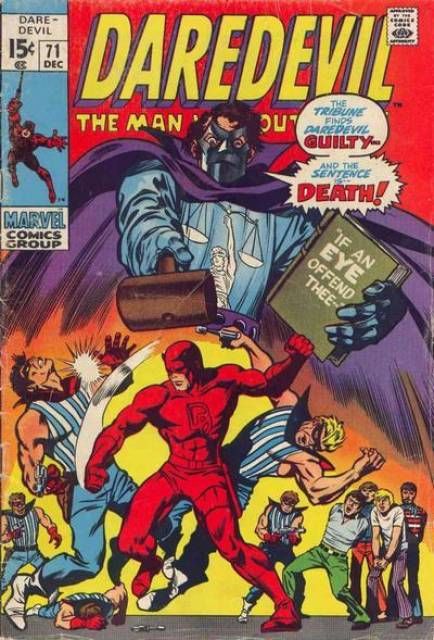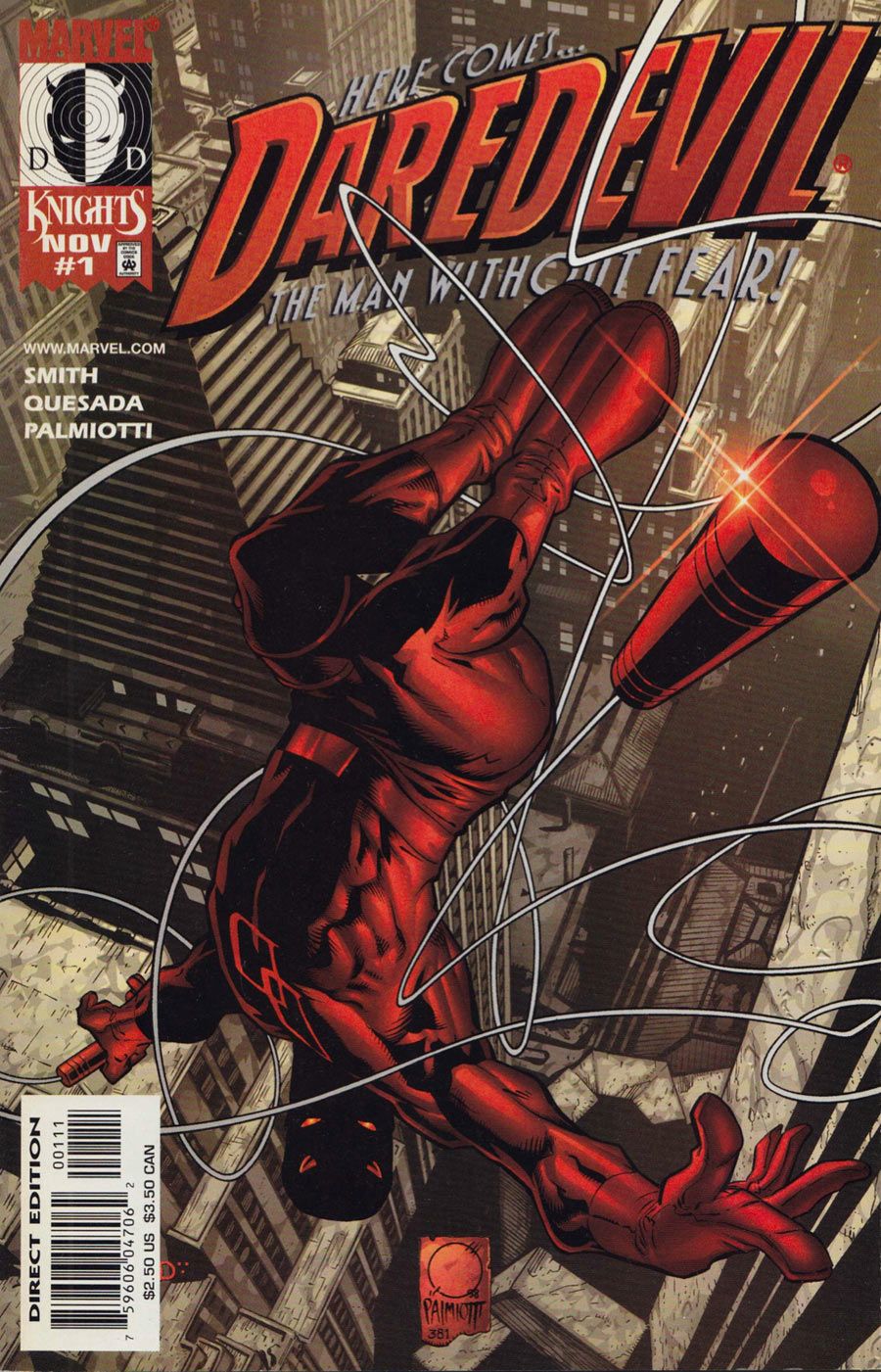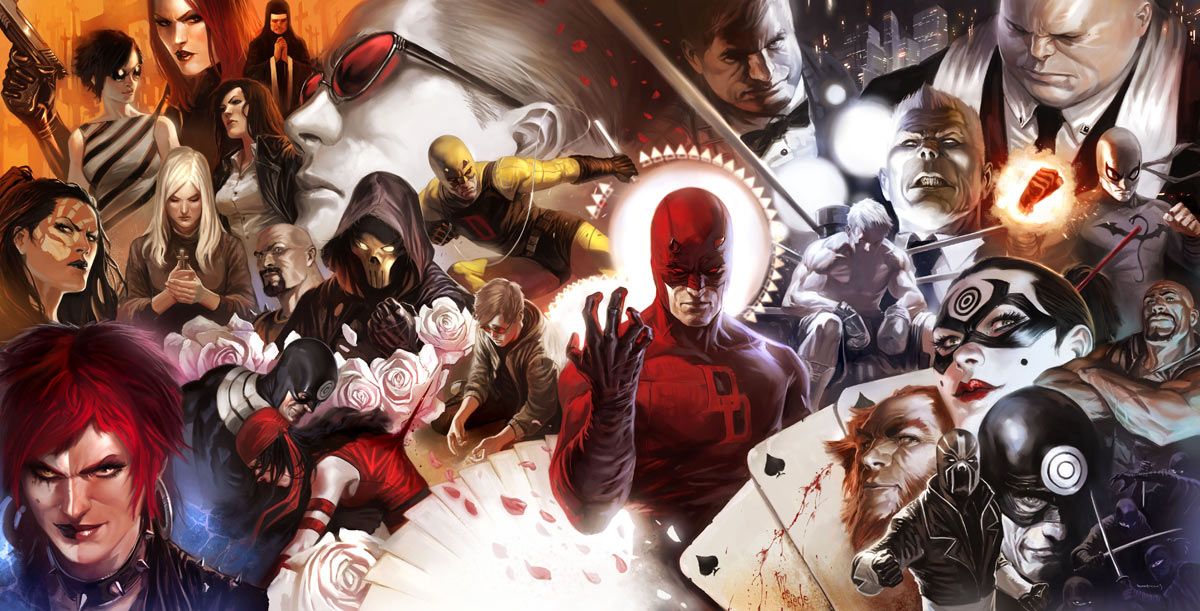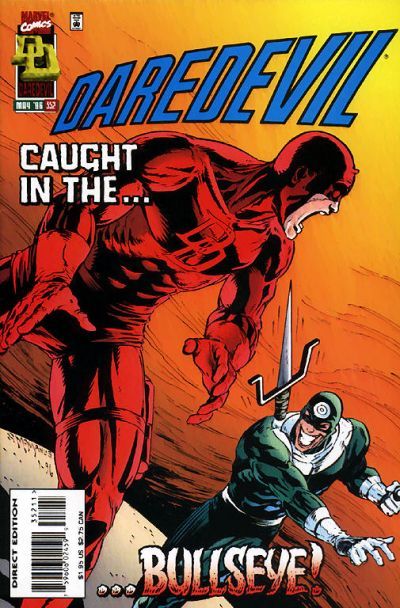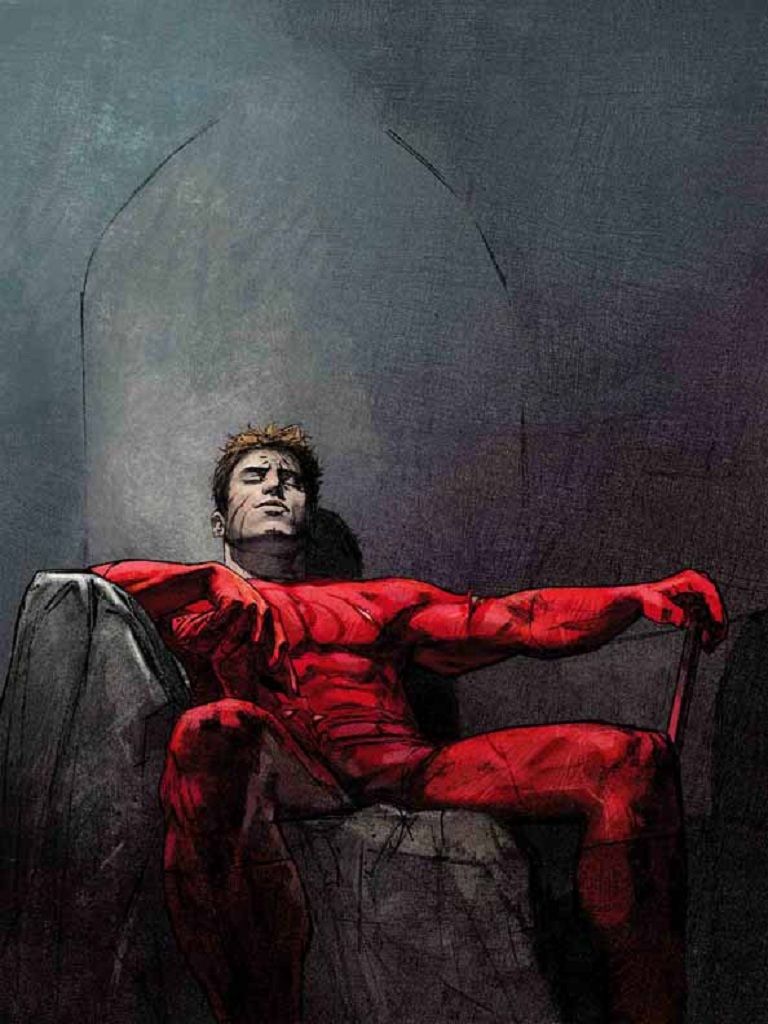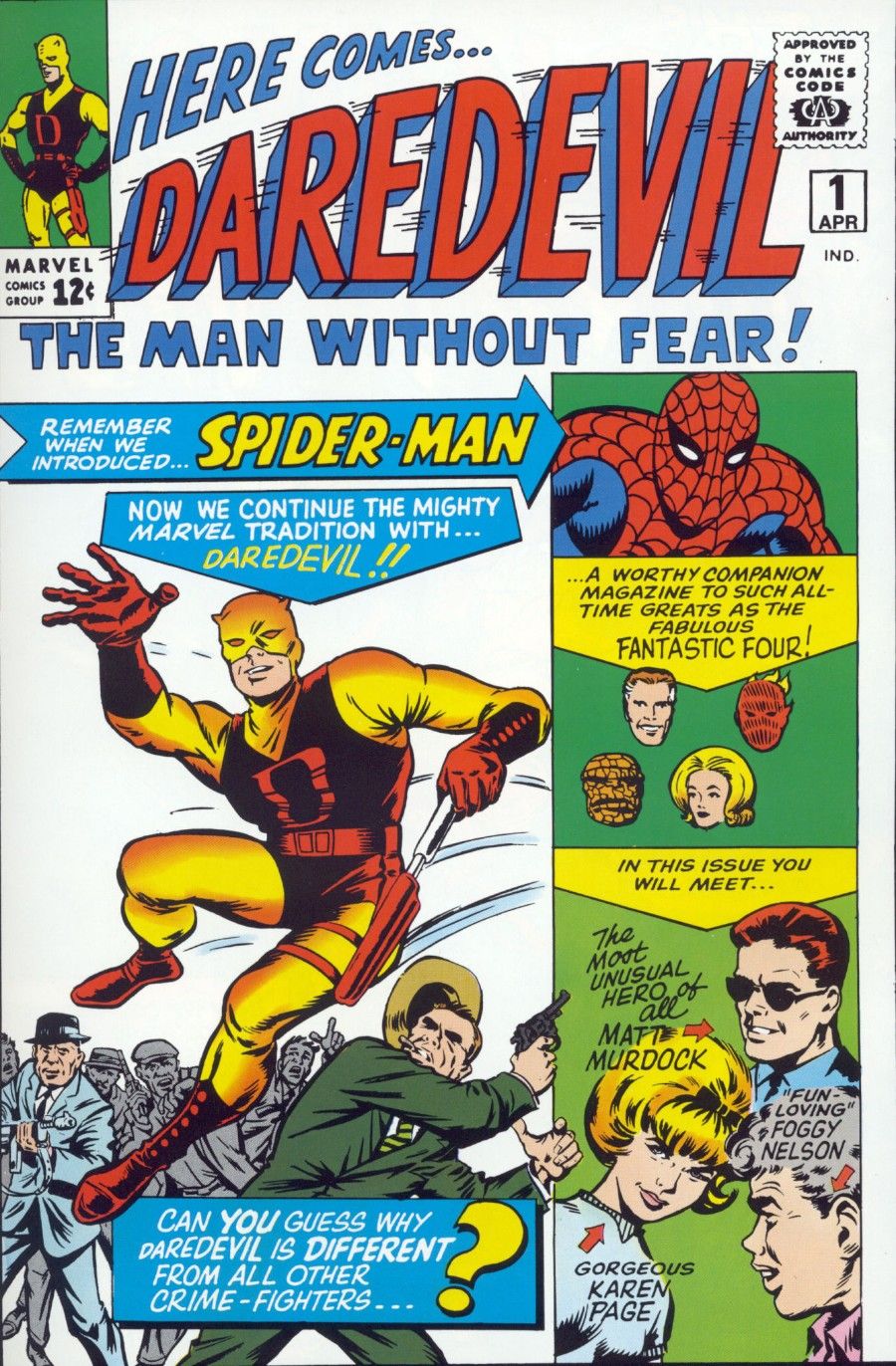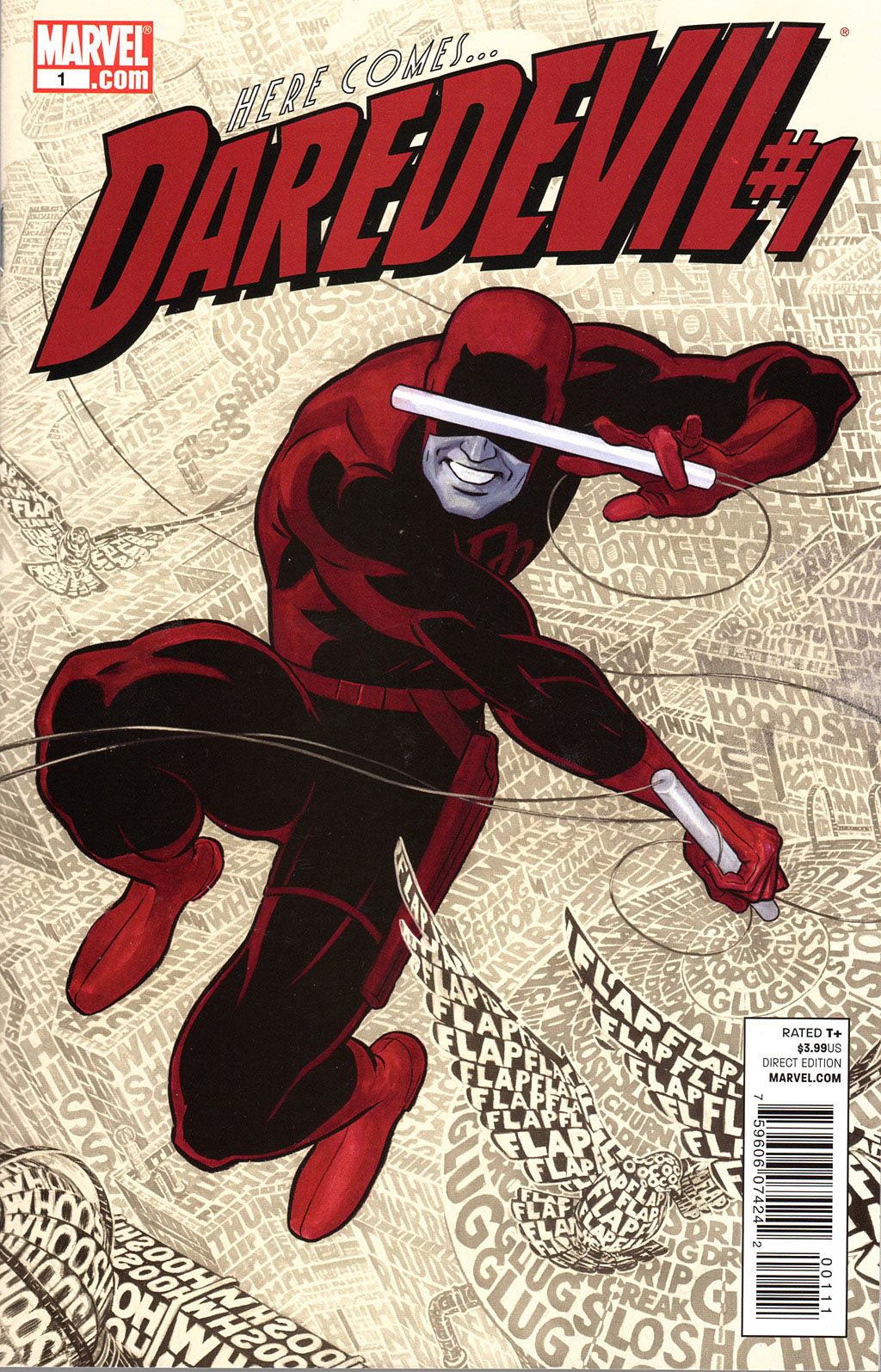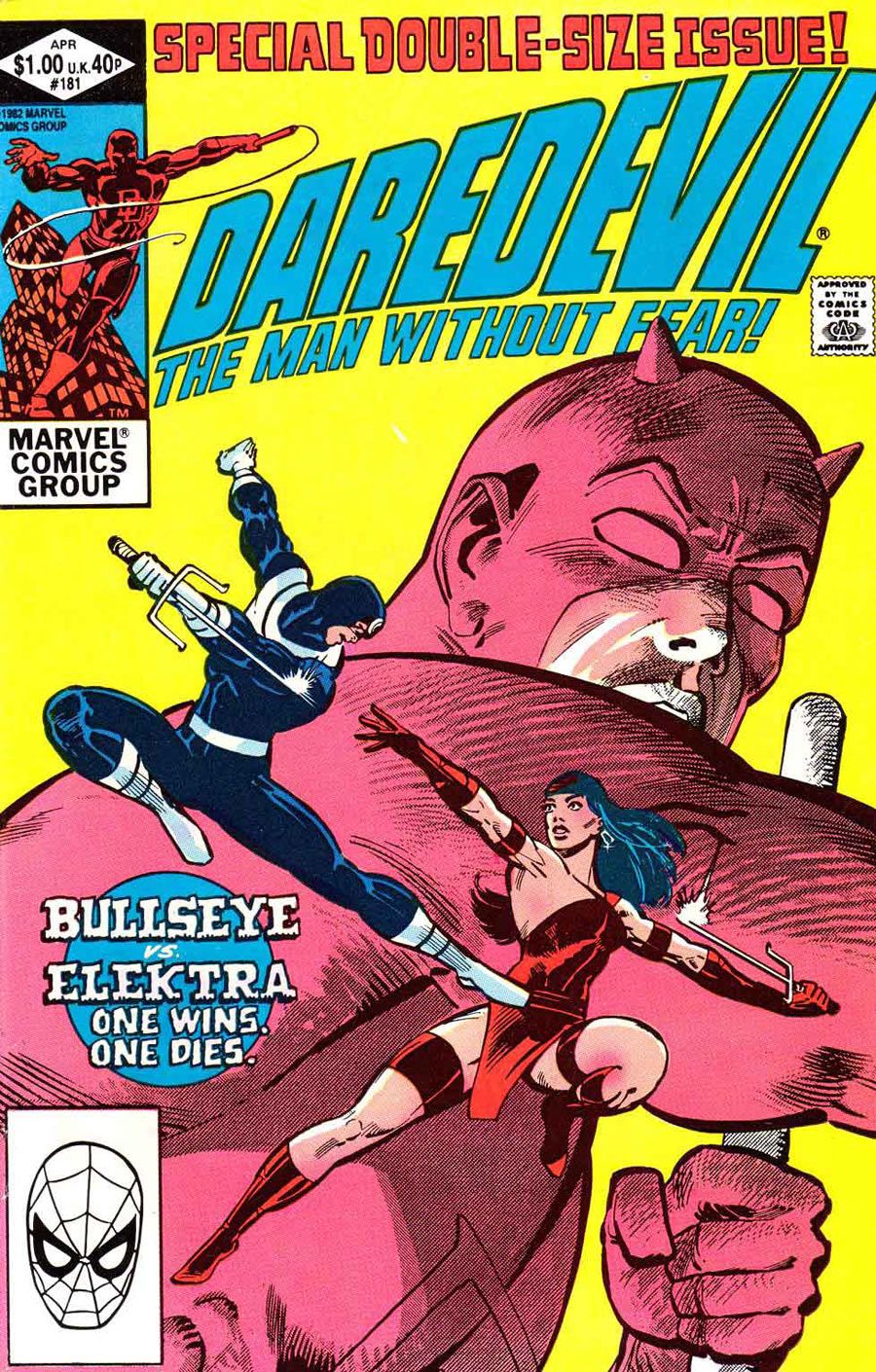For decades, Marvel's "Daredevil" title has been the place for innovative writers and artists to prove themselves, often before before venturing out and tackling the big guns of the Marvel Universe. From the day Stan Lee and Bill Everett introduced Matt Murdock's alter ego, fans and creators alike have recognized that there was something special about the character, something which often brings out the best of the writers and artists involved in crafting his legacy.
Now, as writer Mark Waid wraps up the current chapter of the Hell's Kitchen hero's life and sets out to launch a new "Daredevil" #1 with returning artist Chris Samnee, plus a live-action Daredevil series coming to Netflix (just typing that gives us goose bumps), Comic Book Resources takes a look at the greatest creative runs in the character's rich history, which propelled the creators involved into the next level of stardom.
10: "Daredevil" Vol. 3 #501-512 (2009-2012); "Daredevil: Reborn" #1-4 (2011)
Andy Diggle and Roberto De La Torre with Antony Johnston and Marco Checchetto
Matt Murdock's life had become a living Hell in the previous creators' runs, and Andy Diggle arrived to help the hero deal with the aftermath. Reeling from the loss of his new wife, Milla, after her breakdown, Matt became a relentless crime lord seeking to conquer the underworld so it could not hurt anyone ever again. Possessed by an ancient demon, Matt was in the lowest place possible as he blurred the lines between corruption and morality.
While Daredevil dealt with his own internal struggle, Diggle focused on Matt's allies who drew strength from Daredevil's past inspirational examples. The White Tiger, Black Tarantula, the new Power Man, Iron Fist, Luke Cage and Shang-Chi all fought the possessed Murdock in order to save him from himself. The "Shadowland" crossover dealt with Daredevil as the new Kingpin of New York and the struggle to save a hero's soul. The crossover saw Daredevil as the central figure of a world altering epic, but by this time, fans were growing weary of Murdock being a tortured hero -- they wanted to see him win, and they rejected the Hell's Kitchen-based event.
In retrospect, Diggle's time on the book was a hyper-controlled narrative of redemption, and fans that stuck around got to see their hero return in the criminally underrated "Daredevil: Reborn." The dark beginnings of Diggle's story resulted in readers judging the writer's entire run as a ponderous narrative, but it was just an exercise in dragging Murdock to the depths of morality in order to pick him back up again. When viewed as a whole, Diggle should be remembered as the first writer in a long time who allowed a little light to shine into Daredevil's world.
9: "Daredevil" Vol. 1 #236, 238-245, 247-257, 259-291, 500 (1986-1991, 2009)
Ann Nocenti and John Romita Jr. with Barry Windsor Smith, Sal Buscema, Louis Williams, Todd McFarlane, Keith Pollard, Chuck Patton, Keith Giffen, Rick Leonardi, Steve Ditko, Mark Bagely, Lee Weeks, Greg Capullo, Kieron Dwyer
No one could have followed Frank Miller on "Daredevil." It was, frankly, a useless endeavor to try and replicate what Miller did and hope to gain fan acceptance, so Ann Nocenti did the opposite. Instead of focusing on crime drama and the conflicts established by Miller, she allowed Daredevil to experience the entirety of the Marvel Universe. Nocenti brought in elements of the X-Men, having Daredevil play a vital role in the X-events "Inferno" and "Fall of the Mutants." She had her Daredevil go up against the likes of Ultron and, in her finest hour, crafted a multi-part epic of Daredevil versus the real devil, Mephisto.
None of this should have worked, but thanks to Nocenti's unique brand of storytelling, work it did. Unafraid to take chances, she took the character in the opposite direction of Miller by adding sci-fi and fantasy elements to the typically grounded hero, along with an expanded rogues gallery. That's not to say she abandoned Daredevil's noir roots; as she took the Kingpin/Murdock war and added new elements, Nocenti's most enduring addition to the Daredevil mythos was her creation of Kingpin's new assassin, Typhoid Mary. A mousy actress by day and a dangerous femme fatale by night, Mary was a perfect foil for her Daredevil, a dangerous woman who played havoc with Murdock's enhanced senses.
For the majority of Nocenti's run, she had the good fortune to have an energized John Romita Jr. as her artist. Romita broke the classic Marvel house style, experimenting with lines, shapes and shadows, adding elements of surrealist intensity to Nocenti's fevered pacing. Romita's Mephisto was a sight to behold as Nocenti took Daredevil from his street level roots to a tale of lurid horror. When fans let Nocenti and Romita stand on their own, they find a brave run that was truly ahead of its time, with a hint of Vertigo flavor, years before the imprint would change the medium at DC Comics, making their run one of the most creatively daring in Daredevil's rich history.
8: "Daredevil" Vol. 1 #51-71 (1969-1970)
Roy Thomas and Gene Colan
Gene Colan added an element of gritty realism to the last few years of Stan Lee's "Daredevil" run, establishing the hero as a character that was not afraid to dive deep into the underbelly of the Marvel Universe when the situation demanded it. Colan established himself as the quintessential "Daredevil" artist, giving fans a realistic portrayal of the character and his world, and his vision continued to grow once Lee exited the book. Alongside writer Roy Thomas, Colan established Daredevil's world, the angles and shadows of the streets in which Murdock dwelled becoming an important element of the book. Future artists would take this visual tone and run with it, but it was Colan who introduced the shadowy visual style that grew to define the character.
As for Thomas, the writer continued to do what he did best, finding elements of Lee's original narrative and extending them into a new era. Colan and Thomas established Mr. Fear as a major player while introducing new villains like the Torpedo, Death's Head (a villain perfectly matched to Colan's horror-driven visuals) and the Stunt Master. This era of "Daredevil" delved into themes of patriotism, poverty and racial marginalization.
While Thomas lasted to issue #71, Colan continued on with writer Gerry Conway and expanded Matt Murdock's world visually until issue #100, guiding the book though a title change (it became "Daredevil and Black Widow" with issue #92) and into the heart of the Bronze Age. Every "Daredevil" artist who has followed owes something to Colan's visual world building.
7: "Daredevil" Vol. 2 1-8 (1998-1999)
Kevin Smith and Joe Quesada
Just coming out of bankruptcy, both creative and financial, Marvel had something to prove to a public who had grown weary of the comic company's dearth of creative innovation. Marvel turned to artists Joe Quesada and Jimmy Palmiotti to revitalize some of their lower selling titles and nearly forgotten characters. Leading the charge in the new Marvel Knights imprint was "Daredevil" #1, drawn by Quesada & Palmiotti and written by filmmaker Kevin Smith. Together, the pair reminded fans what a modern comic could look and feel like. With a foot in the past and an eye on the future, Smith and Quesada broke through fan ennui and ushered in a new era for Marvel, an era that would continue for years and perhaps hit its zenith with a four billion dollar sale to Disney and Marvel's current Hollywood dominance. And they did it through damn fine storytelling.
At the time, creators were stuck in the world created and perfected by Frank Miller, spinning their wheels and rarely -- if ever -- adding anything new to the mix. By the end of Smith's time on the book, Karen Page was dead, murdered by Bullseye, and Daredevil was floundering and lost. The arc ended with Matt having a moving discussion with Spider-Man, who lost one of the loves of his life when Gwen Stacy was murdered by the Green Goblin. The talk rekindled Daredevil's heroic spirit, the final step of an intense journey from darkness to light that changed the path of not only Daredevil, but Marvel Comics, forever.
6: Daredevil Vol. 2 #82-119, 500(2006-2009)
Ed Brubaker and Michael Lark with Greg Rucka
When Ed Brubaker and artist Michael Lark were the creative team on DC's "Gotham Central," along with co-writer Greg Rucka, it was more than clear that Lark and his writing partners would make an amazing creative team on "Daredevil." When Brubaker signed an exclusive contract with Marvel, it was only a matter of time before he played in the squalor of Hell's Kitchen.
Like any great writer, Brubaker added to the world in which he took up residence, introducing multi-layered characters like Black Tarantula and Lady Bullseye. Brubaker's primary focus was on Matt's new wife, Milla Donavon, a blind woman who brought hope to Matt's dark world, even as she was slowly driven insane by the likes of Mr. Fear and the Kingpin. The whole thing played out like a classic tragedy as Milla slowly lost her humanity, testing Matt's will. By making Milla the central character of his drama, Brubaker forced readers to look at the consequences of living in Matt's world, a hellish place of terror and brutality that consumed the innocent Milla in order to test Murdock's resolve. It was brutal, unfair and tragic, but that is the world Daredevil must battle, one of noir, dark and relentless.
Lark's pencils added layers of realism to every tragic chapter, and joining with Brubaker, the duo redefined the criminal underworld of the Marvel Universe, guiding Murdock through a highly realistic yet fictional world. Matt may have recovered from the events of their run, but thanks to Brubaker's sense of drama and tragedy, the hero will always bear the scars.
5: "Daredevil" Vol. 1 #352-357, #358-364 (1996-1997)
Karl Kesel and Cary Nord with Larry Hama
After almost a decade of writers trying and failing to ape Frank Miller's run, Karl Kesel brought Matt Murdock back to his freewheeling, swashbuckling roots in 1996. The mid-'90s were not a good time for Marvel, which was dealing with creative upheaval, gross editorial interference and fans greeting each major event with weary apathy. The '90s were a particularly trying time for Daredevil, who spent a befuddling amount of time running around in high tech armor rehashing old stories. During the era of countless X-events and Spider-Man's Clone Saga, Kesel and Nord's run on "Daredevil" was a breath of fresh air. Amidst a swath of joyless heroes, Kesel's Daredevil was not afraid to be fun. There was a sense of old school Marvel joy to the proceedings, but also a sense of danger as Daredevil took on Mr. Hyde, the Enforcers, Pyro and the Eel, the book was never weighed down by its own self-importance. The lighter adventures were a precursor to Mark Waid's current run, and in an era where most Marvel titles were collapsing under their own excess, "Daredevil," for an all too brief period of time, was a rare shining example of just how awesome comics could be.
4: "Daredevil" Vol. 2 16-19, 26-81 (2001-2006)
Brian Michael Bendis and Alex Maleev with David Mack
Brian Michael Bendis had the unenviable task of following Kevin Smith as regular writer of the book. But not only did he rise to the challenge, Bendis changed the way Marvel comics were written. Bendis did not just mimic Miller and Smith, he expanded the roles of Daredevil, Kingpin, Elektra and Bullseye in the Marvel Universe, with a voice unique in comics. He outed Murdock as Daredevil, forever changing the way the vigilante operated; he had Kingpin beaten seemingly to death; he gave a sense of resolution to the Daredevil/Bullseye conflict, with Murdock carving a bulls eye shaped scar on the assassin's head -- and he did it all through the reader's point of view character, Ben Urich. Daredevil was operating in a dirty, nasty, noir world, something new and different to Marvel readers.
Joining Bendis was artist Alex Maleev, whose masterful pencils gave an even sharper edge to the proceedings as each character was rendered hyper-realistically, giving the book a sense of true danger. Elektra was as dangerous as a coiled snake, Typhoid Mary burned with fever and every bruise and scratch was evident on the body of Matt Murdock.
Bendis proved himself as a writer unafraid of change, conflict or controversy, and many of the changes he made are still in effect today. This kind of daring storytelling made Bendis the narrative center of the Marvel Universe as he went on to guide the legacies of the Avengers, and now, the X-Men. Bendis' Murdock was a hero who would never stay down, no matter what kind of pounding he took, and Bendis often pushed the blind her to his breaking point, proving in the process that Daredevil is one of the most inspiring and resilient characters at Marvel.
3: "Daredevil" Vol. 1
Stan Lee with Bill Everett, Joe Orlando, Wally Wood, John Romita, Jack Kirby, Gene Colan, Barry Smith
When people think of Stan Lee's great and lengthy Silver Age runs, their minds automatically think of Spider-Man and the Fantastic Four, and rightfully so. But they might not be aware Lee also wrote "Daredevil" for a startling fifty issues, defining the life and world of Matt Murdock for years. Aiding Stan was a murderers row of Golden and Silver Age greats, each one contributing to the world of Daredevil, finding innovative ways to illustrate his radar senses and athletic prowess.
Lee, along with Golden Age artist and creator of the Sub Mariner, Bill Everett, introduced Daredevil to the world in 1964. When Everett proved unable to meet deadlines, the book was taken over by another Golden Age great, Joe Orlando. Gaudy in appearance, Daredevil didn't catch on right away, facing throwaway villains like the Matador and the Purple Man. (In fairness, the Purple Man became a serious threat decades later, but the Matador, no bueno.) It was not until Wally Wood arrived on the title with Issue #5 that fans began to take notice of the young hero. Wood redesigned the costume to the more familiar scarlet and black garb fans are familiar with in Issue #7, the very same issue that set the series' tone forever. Daredevil is locked in combat with a foe he cannot hope to defeat, the Sub-Mariner. Daredevil loses, badly, but Namor declares Daredevil a noble foe and walks away from the fight. That's Daredevil as established by Lee, the underdog that will never stop swinging no matter how large the odds stacked against him.
Under Lee, the series would continue this motif as Daredevil had to figure out ways to live through and defeat villains like Dr. Doom, Gladiator, Cobra, Mr. Hyde and the Jester. The book still featured some silly Silver Age quirkiness like Frog-Man and the Ani-Men, but it was when Murdock's back was against the wall that Lee's stories really shined on. Future creators would take the idea of Murdock as the underdog and run with it, but the stage was set here.
2: "Daredevil" Vol. 3 #1 - present (2011-Present)
Mark Waid with Paolo Rivera, Marcos Martin, Kano, Khoi Pham, Marco Checchetto, Chris Samnee, Mike Allred, Javier Rodriguez
The Bendis, Brubaker and Diggle runs were character defining drama, intense noirs that pushed the character to his breaking point and beyond. The runs established the character as both the most human and arguably the toughest character in the Marvel Universe. However, after almost a decade of constant torture, it all became a bit much for Matt Murdock and for readers. Enter Mark Waid, a writer who masterfully transforms Silver Age concepts into a modern context as he crafts a wholly original reading experience.
Waid never disregards what came before him, using what the previous writers built as he adds an element of hope and lightness of spirit that has proven a welcome relief for a character, to paraphrase "The Shawshank Redemption," who crawled through a mile of filth and came out clean on the other side. Previous "Daredevil" runs were firmly set on the streets of Hell's Kitchen, hardcore crime dramas that set the standard for the crime genre in comics. Waid shifted the spotlight a bit, opening up breadth and width of the Marvel Universe to Daredevil, from struggles with the Mole Man in Subterranea, to a dimension-hopping battle with the Spot, to a bonding session with the Silver Surfer, no place is impossible for Matt to go. And despite all the tragedy he has suffered, Daredevil has finally returned to his freewheeling swashbuckler roots.
It's this contrast that makes Waid's run so compelling; the tragedy is a huge element to who Matt is, but his ability to endure is what makes him such a great hero. Joining Waid is a who's who of the greatest visionaries in modern comics, each adding their own stylistic elements to Matt's world. The book plays in the fantastic, but it is the human story that sets this run apart from what came before, as Matt must maintain his newfound joy in the face of his best friend, Foggy Nelson, battling cancer. The class and dignity in which Waid and the book's artists portray this human struggle, along with the juxtaposition of this relatable battle with the fantastic elements of the Marvel Universe, is what makes this run so special.
1: "Daredevil" Vol.1 158-191, 219-233 (1979-1986)
Frank Miller with Roger McKenzie, David Michelinie, Klaus Janson, David Mazzucchelli and Bill Sienkiewicz
Each writer on this list changed the Daredevil mythos forever, adding elements and ideas that took the character to new levels. Frank Miller did this as well, but in doing so, he also changed comics. He is the only creator on this list that had such a profound impact on the character both narratively and visually. When Miller took over the art chores on Daredevil in 1979, comics played it safe. There was not a a great deal of experimentation, particularly in super-hero comics. Most writers did their best Stan Lee impression and neatly packed their toys away by story's end. Not Frank Miller. Frank Miller took Daredevil to dangerous places. Artistically, Miller added a layer of shadows and danger to every panel, and when he got a chance to write the character, all bets were off. Miller took a Spider-Man villain, the Kingpin, and made him into one of the most complex and twisted characters Marvel had ever seen. He was the first writer to add an element of religion to Daredevil, revealing that the man who dressed up as a devil was Catholic.
Miller's greatest contribution to the Daredevil legend was the unveiling of a character that oozed with forbidden sex appeal and feminine danger, a modern day femme fatale that stood as the serpent in Murdock' garden of Eden. Elektra broke new ground in sexuality in mainstream comics, becoming first a foil and then a lover to Daredevil. Fans loved everything about her, and just when her popularity peeked, Miller did the unthinkable and violently had her killed. At this time, building up a character just to kill her was unheard of, and fans feverishly followed Miller to see what would come next. Miller's intense crime drama leaked over into other books, as the streets of Marvel darkened and became a more dangerous place. Miller's use of the Punisher in Daredevil exposed that character, allowing Marvel to springboard Frank Castle into multiple titles.
Every Daredevil story that followed had a bit of Miller in it, he turned once minor villains, like Kingpin and Bullseye, into symbols of filth and corruption while he turned Daredevil from a Spider-Man clone into the most unique hero in Marvel's pantheon. The day Frank Miller set his sights on the Man Without Fear was the day comics grew up.


